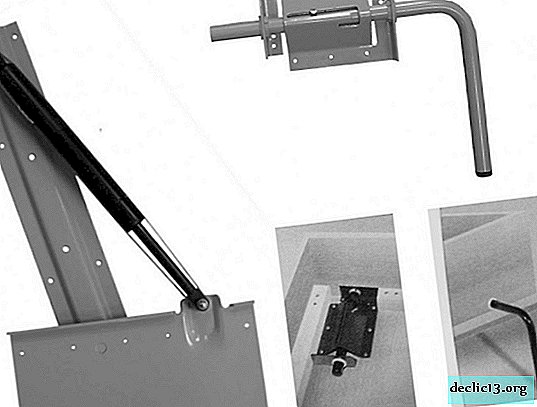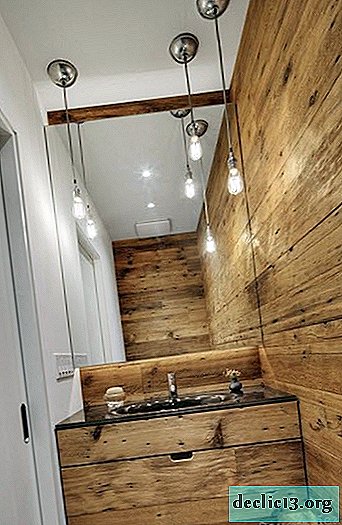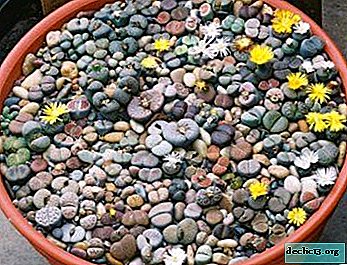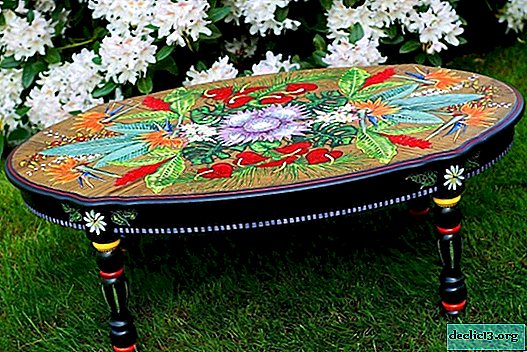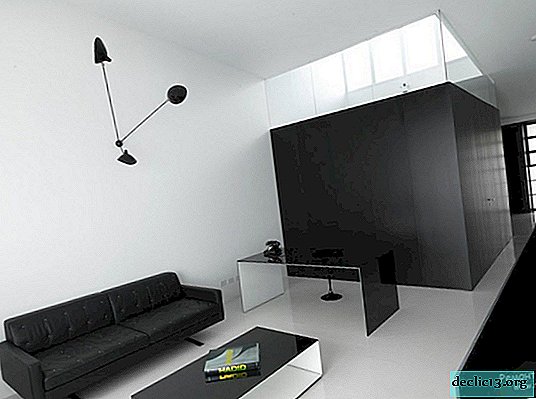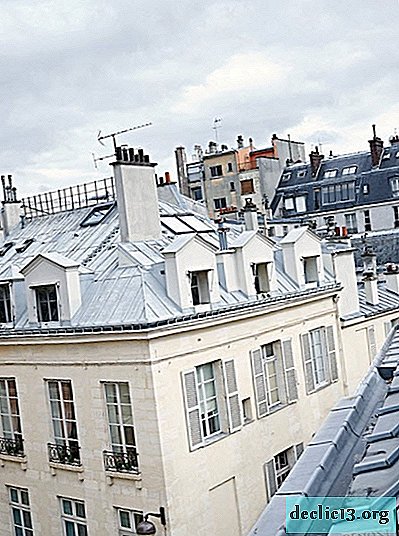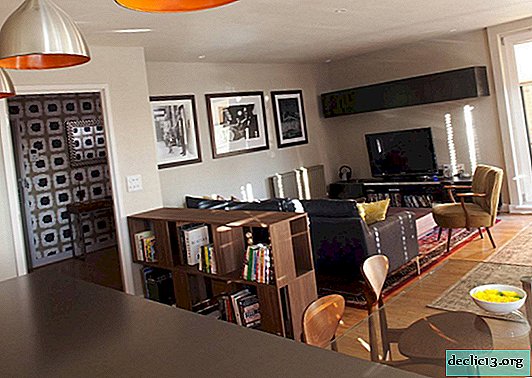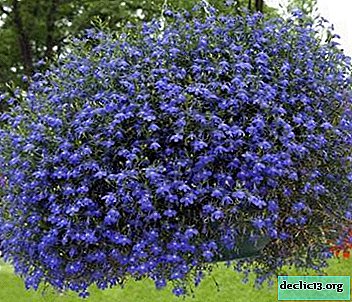Description and useful properties of Fist begonia indoor plant. Planting and care tips, flower photo
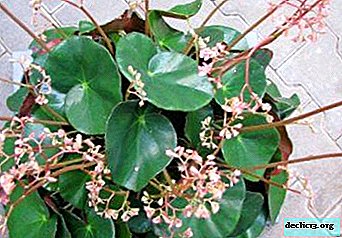
Begonia is a unique plant. It can be called both decorative foliage and decorative flowering. Even the most picky gardener among a huge palette of varieties can find a suitable one for himself. Among this species, one can find ordinary herbaceous plants, and shrubs, and shrubs.
Begonia is not only beautiful, but also useful. Firstly, it enhances the immunity of all who live nearby. Secondly, it restores working capacity and eliminates the feeling of fatigue. Thirdly, it relieves nervous tension.
History of occurrence
The genus Begonia has about 1400 species, which can be found in humid subtropical and tropical zones, and more specifically - in the forests of South America, the tropics of Asia, Madagascar, China and Sri Lanka. These flowers are famous all over the world. They are named after the Frenchman Michel Begon, who became the organizer and sponsor of the expedition to the Antilles.
One of the participants in the expedition, Charles Plumier, described in detail the plant found. In the 18th century Begonia was brought to the European continent. Over time, more and more species came to Europe, which breeders began to become interested in. And already in the 19th century many varieties of artificially created plants appeared.
Botanical Description
Begonia Fista has fat roundish leaves, which also have very large sizes, up to 15 cm in length and up to 12 cm in width.The stems are short, but fleshy and strong light green in color. It blooms in small pink inflorescences, but Fista is appreciated because of the unique leaf design. The root system of this flower is powerful and rapidly developing.
The appearance of a houseplant
The leaves on the outside have a bronze glossy color, and on the inside they acquire an already reddish hue (for this Fist is often called red-leafed). Begonia always grows in a very lush bush. But with this it grows quite compactly. Due to these properties, the flower looks great in a small pot on a stand.
Photo
Meet the flower in the photo.
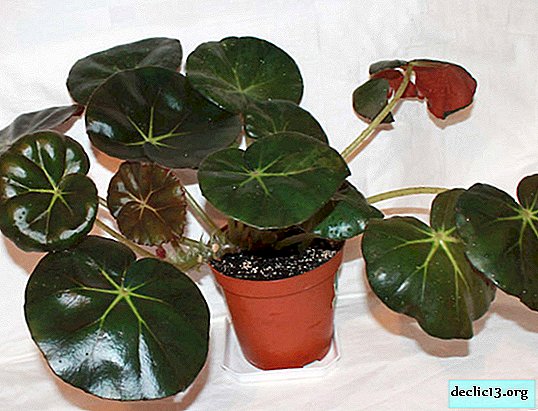


Landing requirements
A young plant should be transplanted once a year (it is advisable to do this in spring, but it is possible after flowering if these dates do not coincide). Adult formed begonias are transplanted after the roots fill the entire pot (this happens approximately every 3-4 years).
Recommended soil composition: sand, peat, humus, leaf and turf soil. A loose and breathable mixture should result. The pot is chosen low, but wide, they do not fill the entire capacity with soil, but do it as the rhizomes grow.It is necessary to carry out the transplantation procedure on the day after watering. In this case, do not forget to free the roots from the old soil and place their weak solution of potassium permanganate for the prevention of fungal diseases. Cleanse the clump of roots from old and diseased, and sprinkle the grated charcoal with the cut.
Please note that in the first 30 days after “moving” to a new pot, begonia needs special attention. It is necessary to water a flower in the first month every 5-6 days, and to spray at all - every day. Protect the transplanted plant from direct sunlight.
Some gardeners even recommend putting the flowerpot in a shaded place without drafts for a couple of days, then, of course, returning it to its original place. After 30 days, it will be necessary to water when the top layer of the earth dries. Since each time the soil will be compacted, do not forget to add it to the desired level.
Experts advise to trim Fista a little after transplantation. in order to reduce the evaporation area and give a bushy shape.
Care
The fact that watering the red-leaf miracle needs to be watered once a week, we have already written above. But let us clarify that this form of irrigation is suitable for the summer period, in winter it is enough to moisten the soil once 10-14 days. Try to prevent water from falling directly onto the leaves.
Year-round, the plant needs high humidity. To maintain this condition, spray air around the pot more often or place a container of liquid next to it. In summer, the air temperature should fluctuate between 20-22 degrees above zero. In winter, this figure can decrease to 16 degrees. But do not allow the air to warm up less than 15 degrees, this will destroy the flower.
Begonia requires a well-lit place, the ideal option would be diffused, rather than direct sunlight. Since they can burn leaves and deprive them of brightness and saturation. But even with a lack of light, the leaves begin to turn pale. If good lighting fails, use artificial light.
Fist needs to be fed once every two weeks, and once a month in winter. But during flowering and active growth, increase the frequency of complementary foods up to 3-4 times a month.To do this, use complex mineral fertilizers, which are diluted with water at room temperature. Bird droppings are also suitable for feeding (500 g is bred in 12 liters of water). Well-fertilized and rotted manure (500 to 5 liters of water).
 It is better not to use nitrogen fertilizers: the leaves will become fatter, and flowering will slow down or stop altogether. Gardeners advise chopping banana skins, citrus peels, onion husks, ash, tea leaves and adding these elements to the soil.
It is better not to use nitrogen fertilizers: the leaves will become fatter, and flowering will slow down or stop altogether. Gardeners advise chopping banana skins, citrus peels, onion husks, ash, tea leaves and adding these elements to the soil.
During dormancy, fertilizers do not need to be used, and watering should become extremely rare. If Fista drops her leaves at this time, do not worry, just cut the top off the flower.
It will not be amiss to say that Begonia does not tolerate gas decay products. Therefore, it is better not to place it in the kitchen. The leaves of this plant are quite fragile, so during transportation you need to be as careful as possible.
Diseases and Pests
- Powdery Mildew This is a fungal disease that occurs when condensation forms in the rhizome. White coating covers the leaves and stems, while the leaves lose their shape and dry up, the buds grow, but do not open. To combat this ailment, ventilate the room well, take care of the lighting in it. And do not forget to fertilize the plant, and also check the Begonias neighbors, a fungus can also pass from them.
- Gray rot (some call monilial burn). This disease is worse than the previous one. After all, with such a fungal infection, all parts of Begonia suffer, which is fraught with its death. It is important to notice the problem in time and remove the affected areas to prevent rot from spreading. Treat the remaining healthy parts with one percent Bordeaux fluid. The interval between disinfection procedures should be one month.
- In addition to sulfur, root rot can also attack. Signs of defeat by it are brown or burgundy roots. If this is not detected in a timely manner, the disease will pass to the stems. The only method of struggle is getting rid of rotting roots. This problem can be avoided by laying a good drainage layer in the pot.
- Due to dust and dirt, a mealybug may appear on the leaf sinuses. Prevention of its appearance will be to keep the flower clean.
- If the leaves are not saturated bright color, this indicates insufficient lighting. And the dark tips of the leaves signal a lack of moisture in the air or soil. If you do not normalize watering and light, Begonia will simply drop its leaves before the onset of the rest period.
- The last pests on our list will be aphids and spider mites. At the initial stage of the lesion, you can cope with a regular soap solution. If the situation gains more serious momentum, it will be necessary to save the plant with a fungicide solution.
Breeding
Fista propagates in two ways: by cuttings and leaves. The most suitable period for reproduction is early spring, at which time the plants emerge from a dormant state.Stages of grafting:
- Cut a shoot 6-9 cm long and lower it into a tool that promotes better rooting, or simply into water, but then the process of root formation will be slightly slower.
 After the appearance of the first roots, a stalk is planted in a pot, the diameter of which does not exceed 10 cm with moist sand and peat soil. Do not forget about the drainage layer!
After the appearance of the first roots, a stalk is planted in a pot, the diameter of which does not exceed 10 cm with moist sand and peat soil. Do not forget about the drainage layer!- Cover with a glass or plastic lid, place the sprouts in a well-lit place without direct sunlight.
- After two weeks, the mineral complex is fed for the first time, and after 30 days, a jar is removed and the flower is plentifully watered.
Leaf propagation has approximately the following sequence:
- The cut sheet is cut along clearly visible veins from the inside, after it is laid on the prepared soil. For a snug fit of the leaf area to the soil, it is pressed with small stones.
- A container of earth is placed in a warm place. Gradually, roots appear in the incised areas, and small seedlings appear on the upper side of the leaf.
Beneficial features
The juice of this plant helps to treat wounds, burns, ulcers, and snake bites. To get the juice, the leaves need:
- Cut, rinse, dry and grind in a blender.
- Squeeze the juice from the resulting mass and strain it.
- Dilute with water in a ratio of 1: 1.
The tincture of Fista juice helps with ulcers of the gastrointestinal tract, lung damage, which is characterized by hemoptysis:
- The juice obtained by the already known method, put in a dark vessel and diluted with ethyl alcohol in a ratio of 1: 1 and let it brew for 2 weeks, while shaking from time to time.
- After 14 days, strain the tincture.
- Take it in 15-20 drops per 20 ml of boiled water 3 times a day for half an hour before eating.
The duration of the course is a month. After giving 30 days of rest, after which the course can be repeated. As a compress, it is used for pain in muscles and joints.

 After the appearance of the first roots, a stalk is planted in a pot, the diameter of which does not exceed 10 cm with moist sand and peat soil. Do not forget about the drainage layer!
After the appearance of the first roots, a stalk is planted in a pot, the diameter of which does not exceed 10 cm with moist sand and peat soil. Do not forget about the drainage layer!
